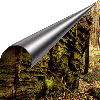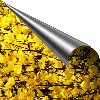

 | Roztoczanski National Park |  |




 | Roztoczanski National Park |  |


The symbol of the Park is the tarpan (Equus gmelini), the Polish konik [pony]. Roztoczanski National Park was established on May 10, 1974. Its total area is 8,482 ha. Zwierzyniec, considered to be a Pearl of Roztocze, is a tourist center located close to the park's northern border. It occupies buildings of the Zamojski estate as well as a historical church located on an island.
Natural values
Roztoczanski National Park entails some parts of the Central and Tomaszowskie Roztocze. Roztocze is a range of hills in east-central Poland. It rises from the Lublin uplands and extends southeastward across the border into Ukraine. The range of low and gently rolling hills is approximately 160 km long. It provides a number of scenic views and is composed of forested terrain, indented with deep gorges and streams running over slabs of limestone.
Some streams, for example Tanew, Swierszcz or Jelen, are very picturesque because of numerous rocky steps and waterfalls. The most interesting types of relief are loess gullies and gentle hills, culminating in Wielki Dzial and Rogaty Goraj, which rise to a height of 390 m above sea level, and Wapielnica (385 m). Among the limestone hills are valleys, where fluvioglacial waters deposited sandy layers. The winds turned them into sand dunes up to 10 m high, while among them small swampy areas are concealed.
The Roztocze area is characterized by the continental climate, with air temperature varying form -30oC in winter, to +30oC in the summer.
The Park comprises 5 strict reserves, namely
which comprise 10,2% of total area.
- Bukowa Gora,
- Czerkis,
- Nart,
- Jarugi, and
- Miedzyrzeki,
Vegetation
This Park was created in order to protect spruce, beech, oak, and linden forests, as well as to preserve rare species of plants, including the aconite monkshood (Aconitum variegatum) and the Astragalus onobrychis, which represent the mountainous flora.
The slopes and the summits of the limestone hills are covered by 19 types of forests, among which the most precious are fir-tree woods (Abietetum polonicum) and Carpathian beech forests (Dentario glandulosae Fagetum). On the northern part of the Park the limestone soil encourages a special type of oak forest (Potentillo albae Quercetum). Some low-lying and damp land has produced streaks of mixed wet forest (Querco Piceetum). The swamp forest (Vaccinio uliginosi Pinetum) has developed in some acidic habitats. The swamp forests are often bordered by moorgrass woods (Molinio Pinetum). On the dry land, especially at the base of the dunes, a new pine forest (Vaccinio myrtilli Pinetum) grows. A large part of the Park's forest area is covered by a mixed forest (Pino Quercetum), where pine reigns over oak and beech trees.
In some stream valleys, small strips of alder swamp (Carici elongatae Alnetum), as well as marshy meadows fringed with alders (Circaeo Alnetum) and patches of transient peatbog (Rhynchosporetum albae) may be found.
Vascular plants of the Park are represented by over 750 species. In addition to the Central European species, there are representatives of numerous mountain plants, as well as northern steppe and Atlantic varieties. Some species are covered with an absolute protection, as for example Allium victorialis, Petasites albus, Galium rotundifolium, Polygonatum verticillatum, D. glandulosa, C. cava, O. militaris, A. ursinum, A. victorialis, L. martagon, Cimicifuga europaea, A. variegatum, and G. ciliata.
Fauna
The Roztoczanski National Park offers numerous attractions to visitors. While admiring the plant life and beautiful loess valleys, they might encounter wild animals such as stags, roe deer, wild boars, tarpans and wolves. In recent years, the animal population of the Park has been enriched by the introduction of two mammal species. In 1979, the European beaver, the largest of the country's rodents, was brought here, and in 1982 the descendant of the wild forest horse (the Polish pony) was introduced into the Park.
Ornithologists recognize about 200 species of birds including the spotted eagle, osprey, white-tailed eagle, buzzard, goshawk, sparrow, hawk, kestrel, and wood grouse. The Echo Ponds are the habitat of various water birds, such as coot grebe, moorhen, duck, black stork, white-backed crane, as well as grey-headed and black woodpeckers.
Among the reptiles one can find aesculapian snake, smooth snake, grass-snake, sand lizard, and viviparous lizard. Amphibians are represented by the salamander, and by the smooth and crested newt. Numerous frogs include hut toad, common European, green and fire bellied toads, common spade foot and European tree frog.
Horse Guard
The Roztocze Nature Conservancy Horse Guard is an association with legal status, allowed to appropriate all its monetary receipts for statutory aims i.e. protection of the natural environment. The intention of the founders was to attract students' attention to the need for nature protection, by taking advantage of students' interest in horse riding. On the basis of 1984 agreement with the Roztocze National Park authority, The Horse Guard has carried out both interventions and preventive actions in the area of the Park. During the first summer, the action was conducted on foot and lasted only two weeks. Currently, the Guard is on duty for three months (from July to September), and performs daily horseback patrolling of the Park. In 1992, after acquiring the legal status of an association, The Horse Guard bought horses and now is the only owner and user of them.
The Guard is also active in the area of Lublin and its vicinity, patrolling the forests and territory surrounding the Zemborzyce Water Reservoir in the Czerniejowice Territory of Protected Landscape. The patrols, which are mounted only, have an intervening and preventative character, and are the statutory activity of The Horse Guard. Other activities include widespread educational actions, including the organization of ecological meetings for children, and weekend activities aimed at awakening and enriching the ecological conscience of Lublin's citizens, who enjoy the area of Zemborzyce Reservoir and surrounding forests.
The very existence of The Horse Guard enables students to work actively for the protection of the environment. The Horse Guard has joined the other participants in the project of the State of Ecological Emergency, which intends to build a network of ecological organizations in the Lublin area.



If you know any WWW sites that reference Polish National Parks please e-mail them to me.
Your input will be greatly appreciated.